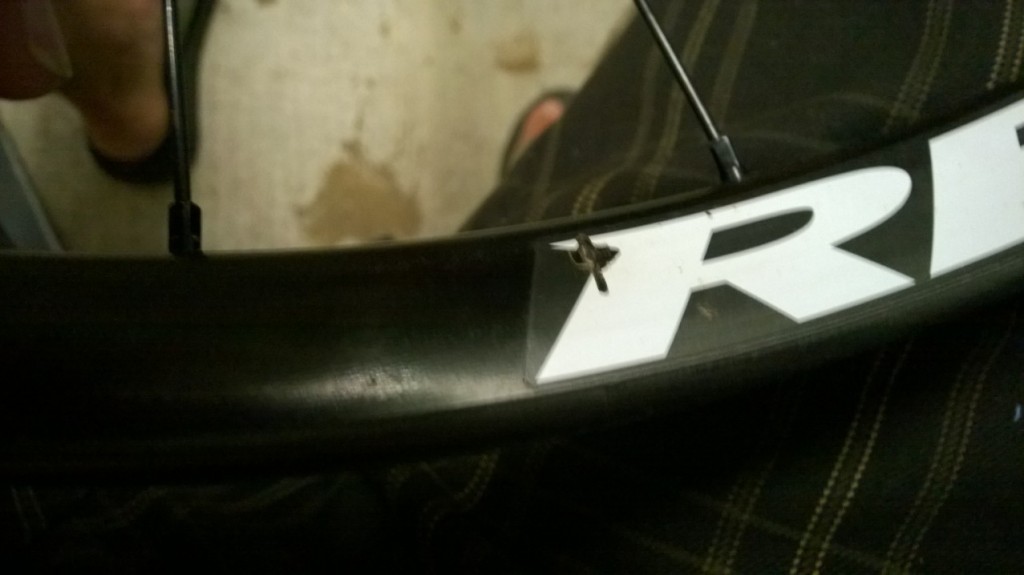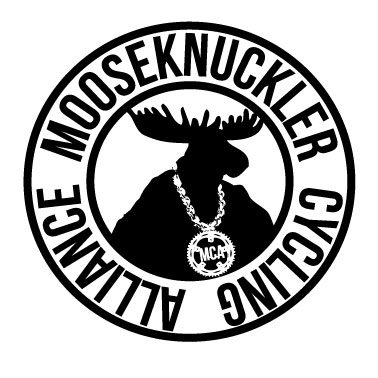 I recently rebuilt my rear wheel on my single speed. This was due to the fact that the rear rim had cracked and despite Pratt being able to run his rim for over a year after said crack, mine was worsening every time I rode it. So I called up the company from which they came and got me a crash replacement rim coming along with the spokes and nipples for said job. All of this cost me exactly three aluminum rims.
I recently rebuilt my rear wheel on my single speed. This was due to the fact that the rear rim had cracked and despite Pratt being able to run his rim for over a year after said crack, mine was worsening every time I rode it. So I called up the company from which they came and got me a crash replacement rim coming along with the spokes and nipples for said job. All of this cost me exactly three aluminum rims.
I break the cost down into the often used bike wrench coin of aluminum rims for a couple of reasons. Firstly, aluminum rims are the only real alternative to carbon. I mean, you could throw an old steel rim on your mountain bike just make sure not to hit anything and that you don’t pump your tires up over 30 psi. You don’t want the rim to flex too much and have the tire pop off. Secondly, the first thing any retrogrouch, hack of a mechanic will mention when you have a broken carbon rim is the fact that you should just build up aluminum. You know cuz it’s cheaper, last longer and most importantly, it isn’t carbon.
The first time I rode carbon wheels on a mountain bike was at SBCU. They had one of the new S-Works Stumpjumpers with the impossible to come by, at that time, Roval carbon wheels. Seeing that I already owned the Stumpjumper frameset in the single speed version, I was quite excited to try out the carbon wheels. Even before riding the wheels, I was pretty much sold on the idea of carbon rims. They don’t dent. They don’t bend. Truing them should be minimal throughout their life span and they are fucking light.
I was not disappointed. The wheels spun up on the 29er like you would expect a high end wheel to do on a 26. The weight that was once associated with wagon wheels was no longer an issue. They were stiff and rode nice. I couldn’t wait to get my pair that I had on the preseason order at the shop.
At this point, I had been riding almost exclusively a rigid single speed for about five years. My wheels of choice had been a set of the new Industry 9 wheels with their super fast engaging hub. These wheels came with DT Swiss aluminum rims. After about three rides, I was forced to true them. After about three months, the rims were so dented and bent that I couldn’t get them to stay straight through spoke tension for more than a couple of rides. I called I9 to see if there was a replacement rim that they knew of that would last longer. I was more concerned with longevity than weight. They didn’t know of any. So after three months, I rebuilt my I9 wheels with the same DT Swiss rims.
The second set of rims lasted six months.
At this point, the Salsa Delgado was out and all the rage. Any bike tech worth his salt was building these up for everyone. Luckily for me, they had an ERD that was close enough to the DT Swiss’ that I felt confident they would lace on the same spokes. They did. And I was stoked. They were lighter, stiffer and looked cooler. However, after six months of riding, they needed a fork stuck in ’em because they were done. Another set of Salsas and then I moved onto Velocity Blunts.
Regardless of the rim of choice, I would get six months. Consistently for the span of 4 years. At that point, I switched out the I9s for a set of aluminum Rovals. When I sold them a year later, they had about three dents per wheel. That was in 2011.
I rode that carbon rim for three years. Did I have to true it? Not really. I checked spoke tension a few times, but truth be told, I spent more time servicing the hub and freehub over the years than I did playing with the spokes. And after three years of exactly the same type of riding, my carbon rim broke. When did it happen? I have no idea. I only happened to notice it because the crack was where I looked on the rim to see if they were holding the recently applied tubeless set up.
So three years on one carbon rim, the front is still going strong. If we were to analyze that based on the official coin of bike mechanics, that one carbon rim and spokes cost me the three aluminum rims. Assuming that I would have continued with the same aluminum rims of before, I would have replaced front and rear five times. That’s a total of ten aluminum rims. Meaning that my replacement after three years cost me 70% less than what it would have cost me to run aluminum.
You may now be saying, yea, but the upfront cost is a huge difference. And you would be right. You’re mid level aluminum wheelset is about $600 and a carbon one is closer to $2200. Assuming that we are starting from zero, you would have the upfront cost regardless. Meaning that the carbon wheels are costing you $1600 more than the aluminum. A typical, low end aluminum rim will cost you around $60. If you do things right and replace the spokes every time, that cost is closer to $100. If you have to do that five times per wheel, your replacement cost to continue to run aluminum is $1000. This does not include the cost to build the wheels each time. Which you will have to account for unless you plan on doing it yourself. I’ve seen a wide range of prices for this, but for an aluminum wheelset I’m going to peg it at $65 (being on the lower end of that scale) adding another $650 for your three year maintenance on your wheels.
Unless you suck at math, I think you get where this is headed. And again those are raw costs. When you throw in the time off the bike waiting for the wheels to be built or waiting for the time to build the wheels, the head ache of the countless wheel trues and hoping that that last dent you put in the rim will still hold tubeless. I think it’s a pretty hard argument to make that anyone should be running aluminum wheels on a mountain bike.
Of course, these numbers are all based on my personal experience and carbon haters out there will tell you about all the broken carbon wheels they have seen. Yea, shit breaks. Get over it. Just ask them how many dented and bent aluminum rims they have seen and how many times they have told a customer that they should probably replace them because they aren’t safe to ride, but… Yea, those aren’t broken…
P. L. and R.
